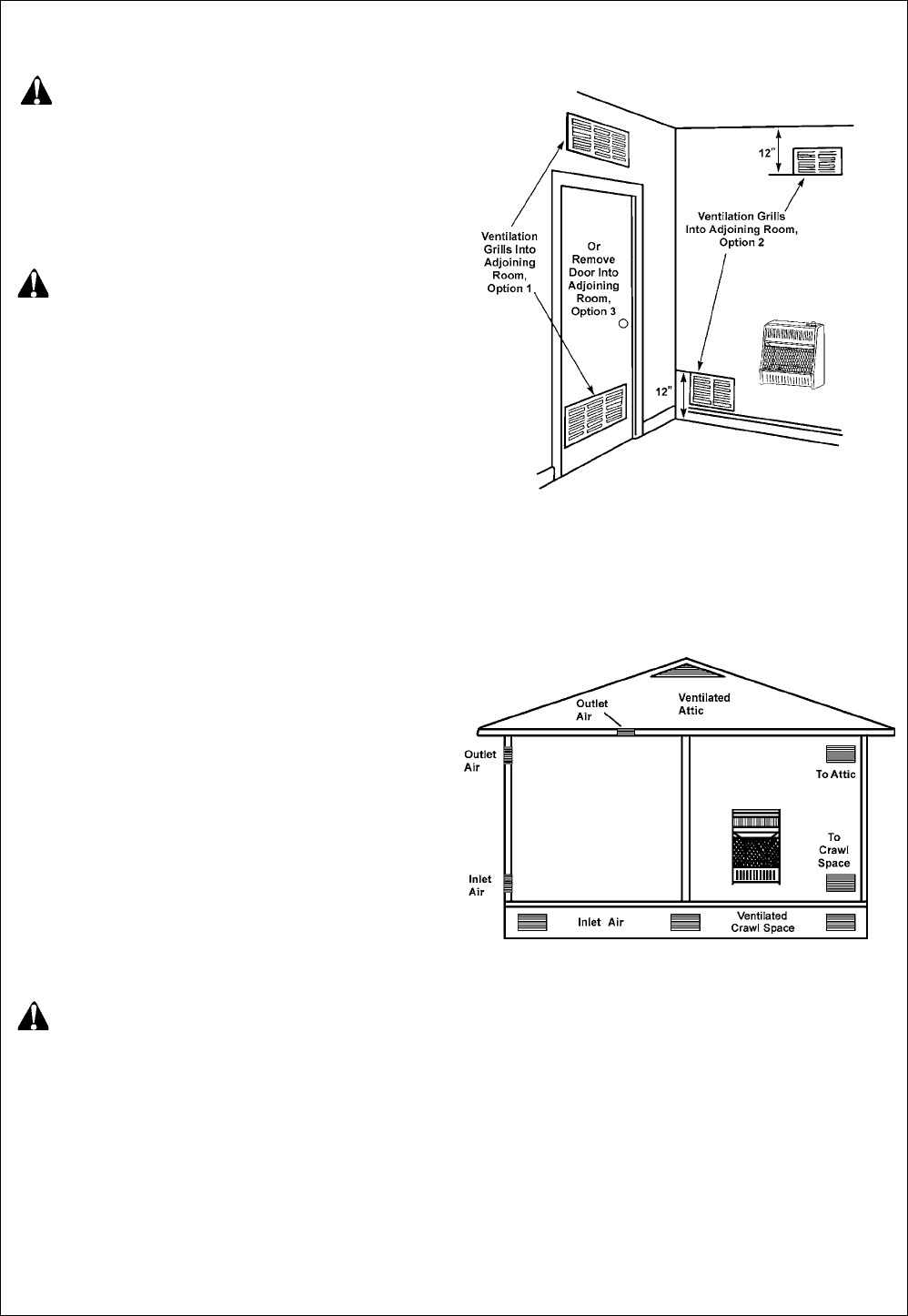
1111
Figure 3 - Ventilation Air from Outdoors
Figure 2 - Ventilation Air from Inside Building
NOTE: Base not included. Not for use in
bedrooms or bathrooms.
WARNING: If the area in which the heater
may be operated is smaller than that dened as an
unconned space or if the building is of unusually
tight construction, provide adequate combustion and
ventilation air by one of the methods described in the
National Fuel Gas Code, ANSI Z223.1/NFPA 54. Air for
Combustion and Ventilation, or applicable local codes.
WARNING: If the area in which the heater may be
operated does not meet the required volume for indoor
combustion air, combustion and ventilation air shall
be provided by one of the methods described in the
NATIONAL FUEL GAS CODE, ANSI Z223.1/
NFPA 54, the INTERNATIONAL FUEL GAS CODE, or
applicable local codes.
Ventilation Air From lnside Building
This fresh air would come from an adjoining unconned
space. When ventilating to an adjoining unconned
space, you must provide two permanent openings: one
within 12 inches of the ceiling and one within 12 inches
of the oor on the wall connecting the two spaces
(see options 1 and 2, Figure 2). You can also remove
the door into adjoining room (see option 3, Figure 2).
Follow the National Fuel Gas Code. ANSI Z223.1/
NFPA 54
, Air for Combustion and Ventilation for
required size of entilation grills or ducts.
Ventilation Air From Outdoors
Provide extra fresh air by using ventilation grills or
ducts. You must provide two permanent openings: one
within 12 inches of the ceiling and one within 12 inches
of the oor. Connect these items directly to the outdoors
or spaces open to the outdoors. These spaces include
attics and crawl spaces. Follow the National Fuel Gas
Code, ANSI Z223.1/ NFPA 54, Air for Combustion and
Ventilation for required size of ventilation grills or ducts.
IMPORTANT: Do not provide openings for inlet or
outlet air into attic if attic has a thermostat-controlled
power vent. Heated air entering the attic will activate
the power vent. Rework worksheet, adding the space of
the adjoining unconned space. The combined spaces
must have enough fresh air to supply all appliances in
both spaces.
